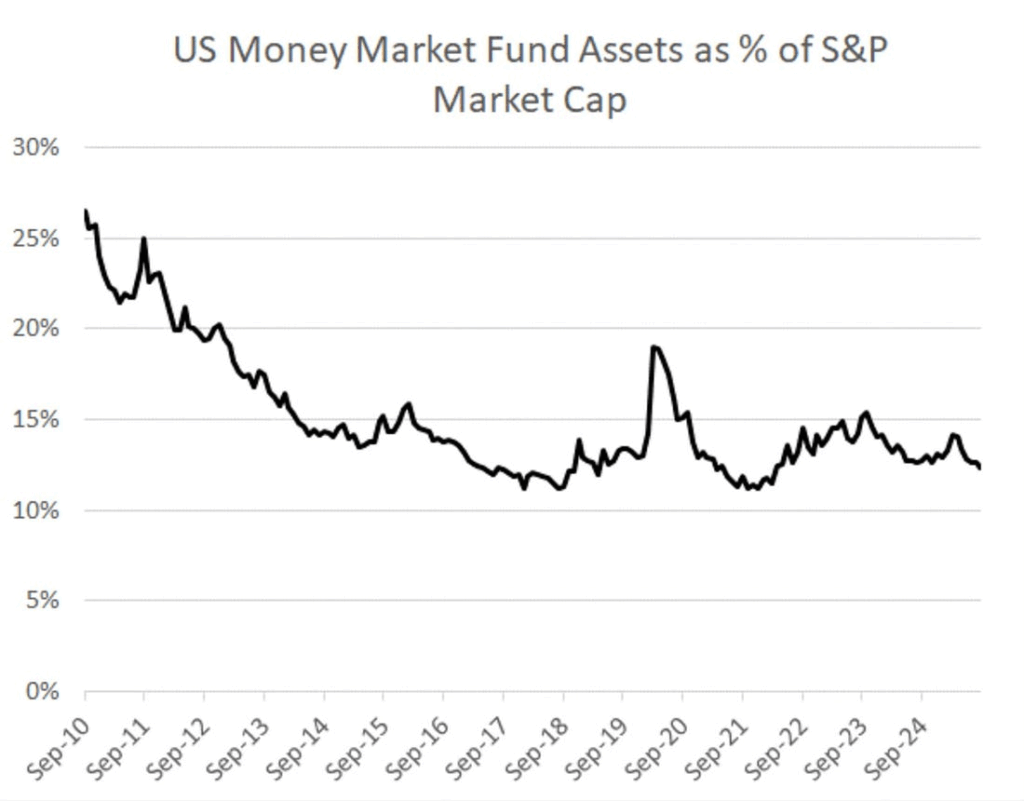1. Mag 7–Only two of them (Nvidia and Google) have made a new 52-week high over the last month.
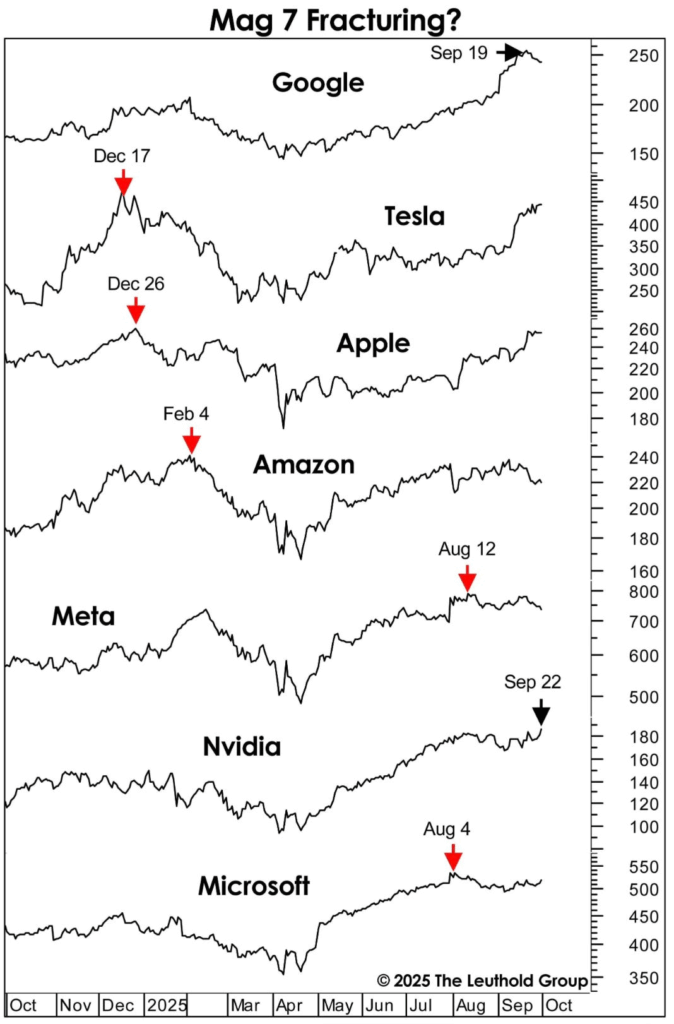
Source: The Leuthold Group via The Daily Chart Report Eric Soda blog
2. Q3 Earnings Season Starting–Q2 2025 was One of the Best Earnings Seasons in Years…80% of S&P 500 beat estimates, 7th-highest on record-Ned Davis
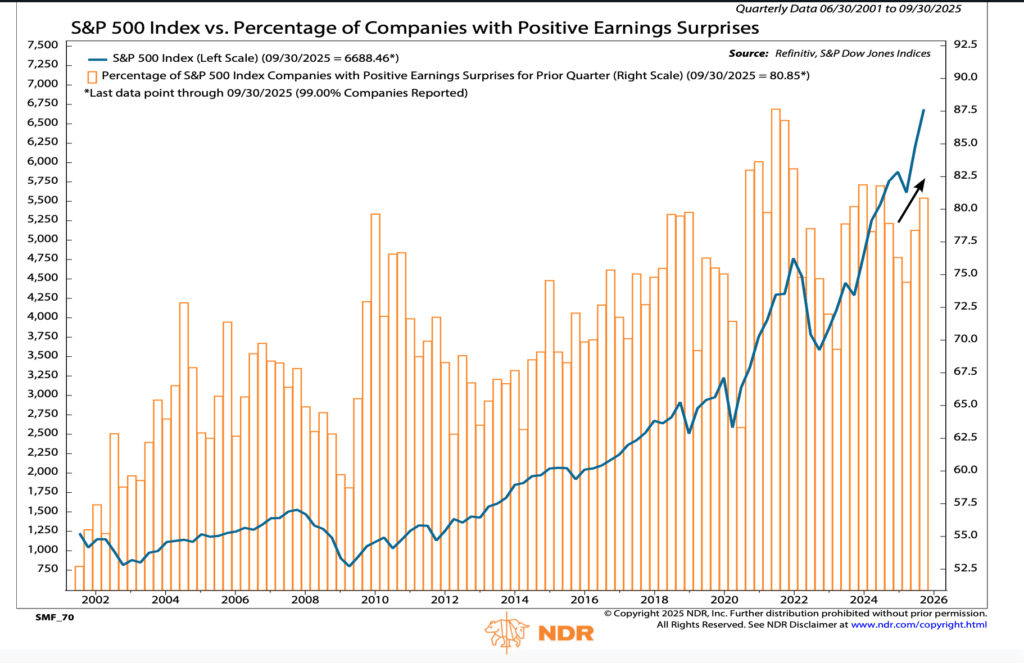
NDR
3. Auto Loan Delinquency Rate
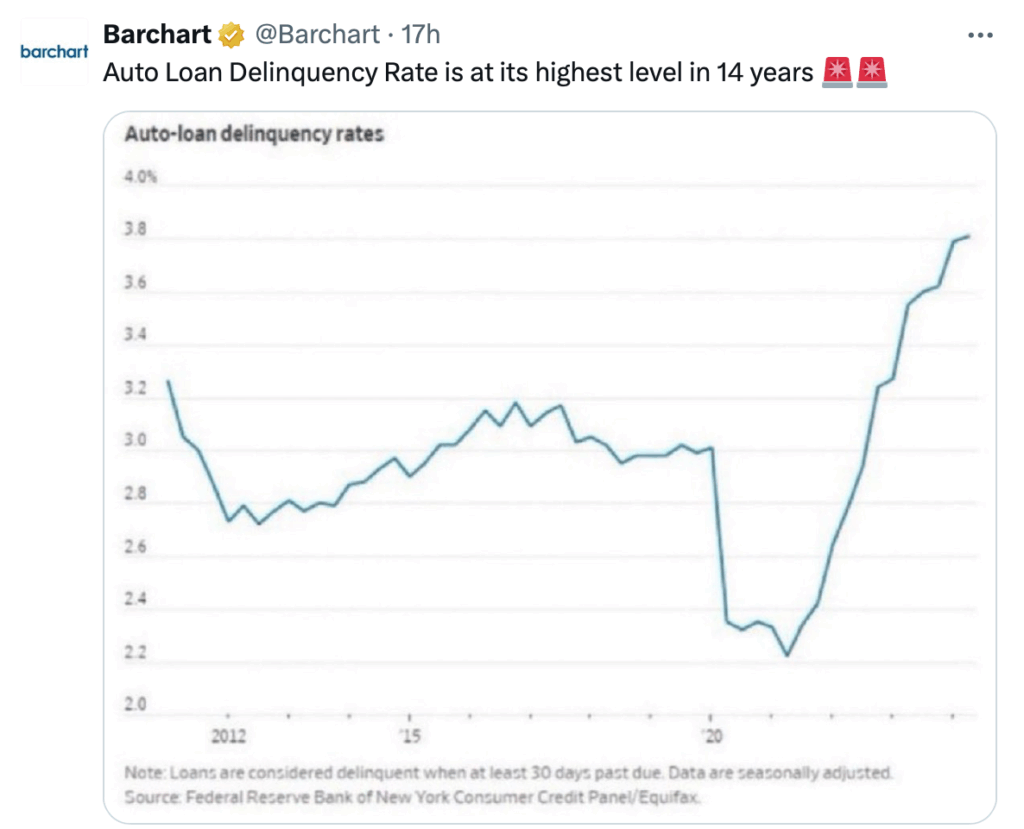
Barchart
4. Biotech ETF Breakout 3-Year Highs
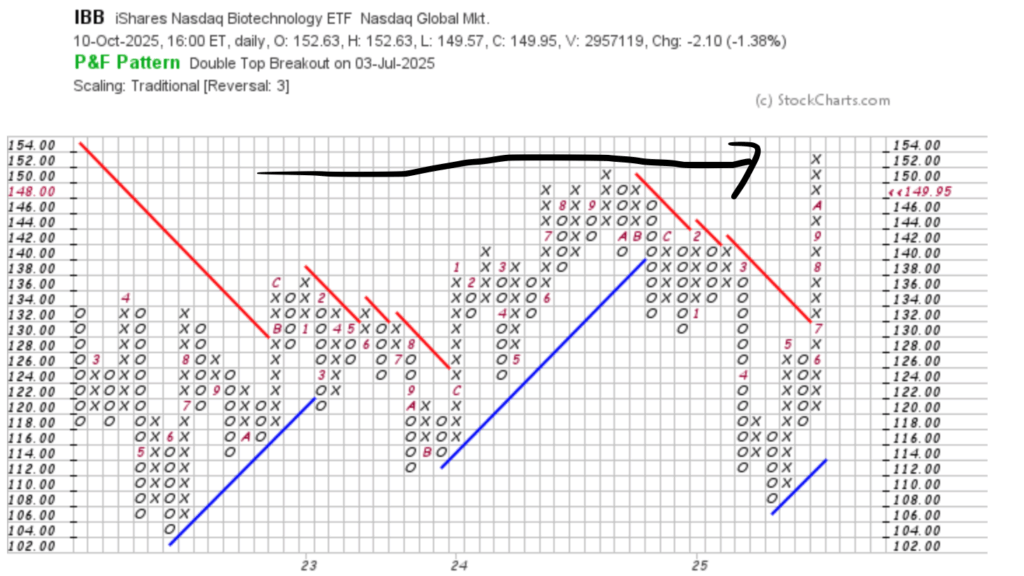
Stockcharts
5. 3-Year Old Bull Market vs. History

Ryan Detrick
6. Equity ETF Flows NOT Extreme-Irrelevant Investor Blog
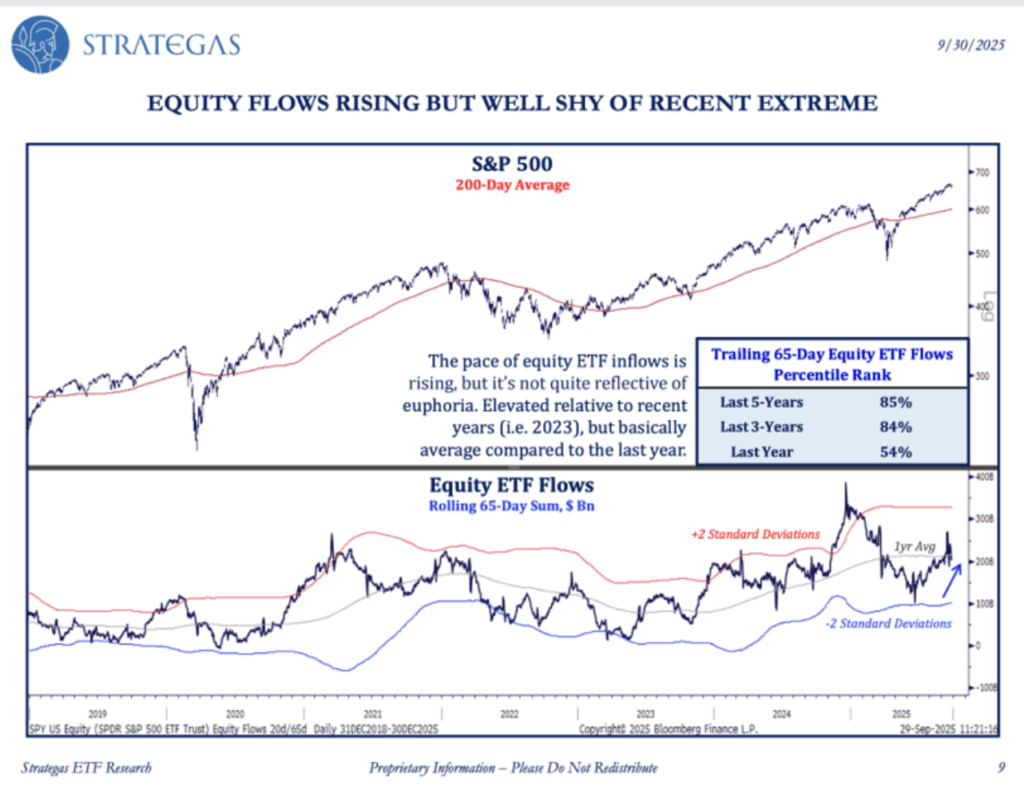
The Irrelevant Investor
7. The Top 20 Most Invasive Applications
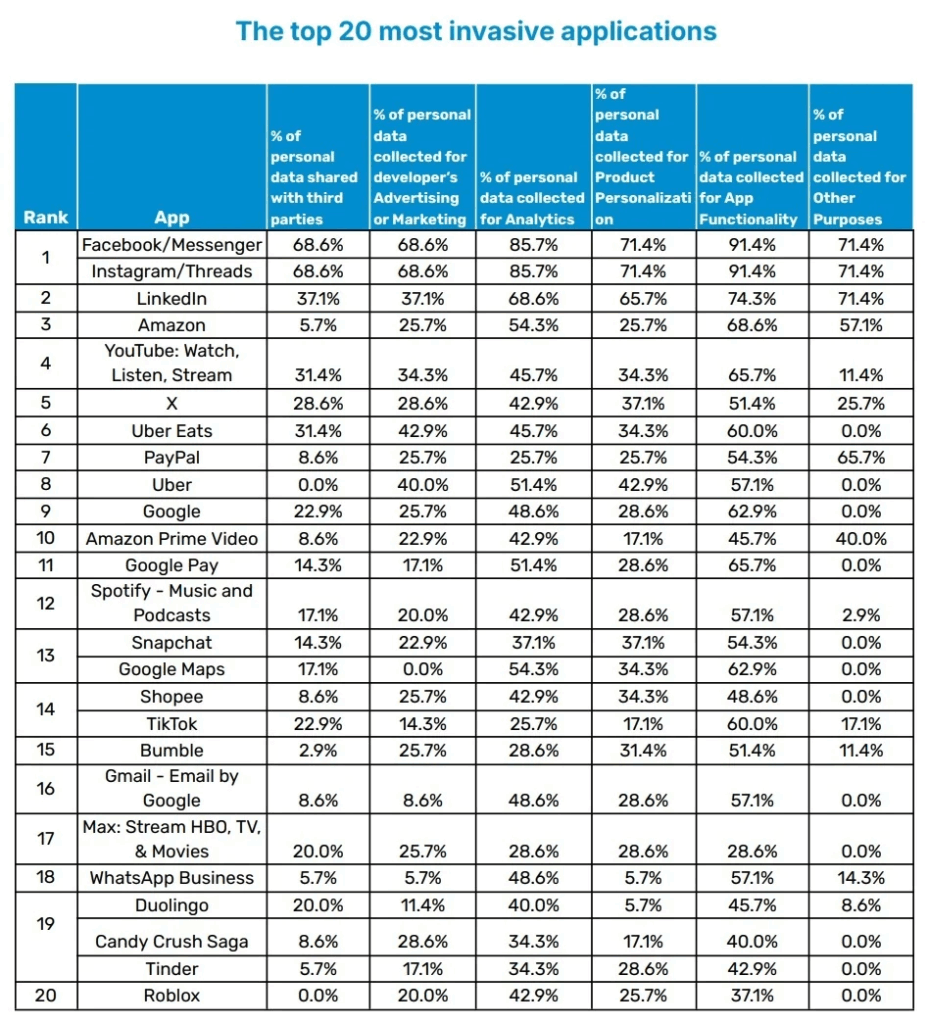
The Big Picture
8. Homelessness Globally

Statista
9. Want to feel calmer? How 20 minutes outside will help
Yasmin Rufo-BBC News
Spending just 20 minutes in nature can trigger measurable changes inside your body
If you’ve ever felt calmer after a walk in the park or a stroll through the woods, it’s not your imagination – it’s biology.
Being outdoors can trigger measurable changes inside your body from lowering stress hormones, easing blood pressure and even improving your gut health.
You don’t have to hike for hours to feel these benefits as maximum impact happens after just 20 minutes, so even a lunchtime walk to the park and a sandwich on a bench a few times a week can benefit your body and mind.
Here are four ways that being among nature can help improve your health.
Drs Chris and Xand van Tulleken are on a mission to help us take better care of ourselves. Listen to What’s Up Docs? on BBC Sounds or wherever you get your BBC podcasts.”
1. You unconsciously relax
When you see green trees, smell pine and hear gentle rustling leaves or the sound of birdsong, your autonomic nervous system – a network of nerves controlling unconscious processes – responds instantly.
This can happen on a visit to the local park.
“We see changes in the body such as a lowering of blood pressure, a change in your heart rate variability and your heart beats slower – all associated with physiological calming,” Baroness Kathy Willis, a biodiversity professor at Oxford University, told BBC Radio 4’s What’s Up Docs? podcast.
A UK study, involving nearly 20,000 people, found that those who spent at least a total of 120 minutes every week in greenery were significantly more likely to report good health and higher psychological well-being.
The evidence for the benefits of spending time in nature is compelling enough that some areas have trialled so called green social prescribing connecting people with nature to improve their phsyical and mental health, with a positive impact on happiness and wellbeing.
2. Your hormones reboot
Your body’s hormonal system also joins in the relaxation act.
Willis says that spending time outdoors triggers our endocrine system and lowers levels of cortisol and adrenaline – the hormones that surge when you’re stressed or anxious.
“A study found that people in a hotel room for three days who were breathing in Hinoki (Japanese cypress) oil saw a big drop in the adrenaline hormone and a large increase in natural killer cells in their blood.”
Natural killer cells are cells that tackle viruses in the body. The participants in the study still had elevated natural killer cells in their body two weeks after inhaling the smell.
Essentially nature “calms what needs calming and strengthens what needs strengthening,” is how Prof Ming Kuo from the University of Illinois at Urbana-Champaign, summed it up to the BBC.
“A three-day weekend in nature has a huge impact on our virus fighting apparatus and even a month later it can be 24% above baseline.”
Studies also show smaller but still persistent effects from shorter periods spent in nature, she says.
3. Smell is a powerful sense
Smelling nature is just as powerful as seeing and hearing it.
The scent of trees and soil is full of organic compounds released by plants and “when you breathe them in, some molecules pass into the bloodstream.”
Willis says pine is a good example of this as the smell of a pine forest can make you calmer within just 90 seconds and that effect lasts for about 10 minutes.
You may think that the relaxing effect of nature is all in your mind, but another study found that even very young babies with no memory associated with particular smells, still calmed down when another scent associated with calming, limonene was puffed into the room they were in.
4. Gets good bacteria into your gut
Touching soil can help your body adopt good bacteria
As well as soothing your mind, nature can also help boost your microbiome as soil and plants are full of good bacteria.
“They’re the same kinds of good bacteria we pay for in probiotics or drinks,” Willis explains.
Prof Ming Kuo has studied the effect on factors such as infection susceptibility as well as mental health and says breathing in certain ones have the potential to boost your mood; and the antimicrobial chemicals released by plants – called phytoncides – could help fight disease.
Dr Chris van Tulleken says as an infection scientist he sees nature as a positively challenging environment that “tickles your immune system”.
He gets his children to play with dirt in the forest which then enters their system through the nose or mouth.
https://www.bbc.com/news/articles/cvg0yvdjgn5o
10. Interview with Hetty Green—1800’s Billionaire-Farnam Street Blog
Hetty Green was the richest woman you’ve never heard of.
In the late 1800s, she built a fortune worth billions today in a world designed to stop her. She was a force that couldn’t be stopped.
Her strategies still work today. This is the story of how an unwanted daughter became “The Witch of Wall Street,” and a playbook for building lasting wealth and independence.
+ Listen to the full episode on Apple | Spotify | Web | X
Here are 10 of the maxims I took away from this episode and my research
- “If you can manage your brain, you can manage your fortune.”
- The skills to get rich and the skills to stay rich are not the same.
- Only invest when downside risk is low and upside is high.
- Everyone looks smart when they’re in a good position, and even the smartest person looks like a fool in a bad one.
- “I go my own way, take no partners, risk nobody else’s fortune.”
- Mix extreme patience with extreme decisiveness.
- “Watch your pennies and the dollars will take care of themselves.”
- Move in silence. Keep your positions private.
- Never take advantage of people, even when you could.
- “Seek elegance rather than luxury, refinement rather than fashion.”











